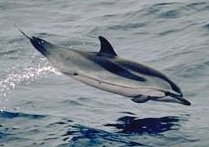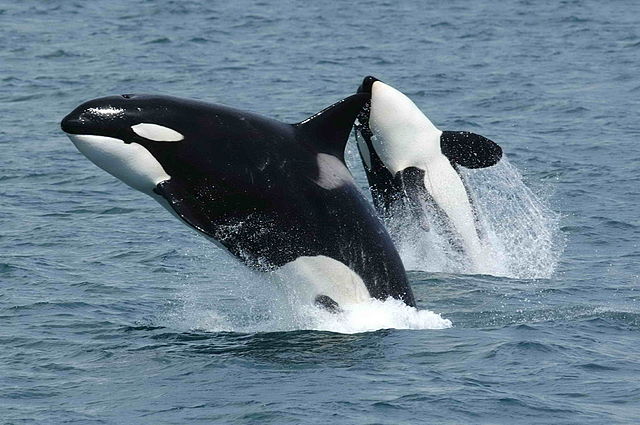List of mammals of Seychelles
From Wikipedia, the free encyclopedia
This is a list of the mammal species recorded in the Seychelles. Of the mammal species in the Seychelles, two are critically endangered and two are vulnerable.[1]
The following tags are used to highlight each species' conservation status as assessed by the International Union for Conservation of Nature:
| EW | Extinct in the wild | Known only to survive in captivity or as a naturalized populations well outside its previous range. |
| CR | Critically endangered | The species is in imminent risk of extinction in the wild. |
| EN | Endangered | The species is facing an extremely high risk of extinction in the wild. |
| VU | Vulnerable | The species is facing a high risk of extinction in the wild. |
| NT | Near threatened | The species does not meet any of the criteria that would categorise it as risking extinction but it is likely to do so in the future. |
| LC | Least concern | There are no current identifiable risks to the species. |
| DD | Data deficient | There is inadequate information to make an assessment of the risks to this species. |
Some species were assessed using an earlier set of criteria. Species assessed using this system have the following instead of near threatened and least concern categories:
| LR/cd | Lower risk/conservation dependent | Species which were the focus of conservation programmes and may have moved into a higher risk category if that programme was discontinued. |
| LR/nt | Lower risk/near threatened | Species which are close to being classified as vulnerable but are not the subject of conservation programmes. |
| LR/lc | Lower risk/least concern | Species for which there are no identifiable risks. |
Order: Sirenia (manatees and dugongs)

Sirenia is an order of fully aquatic, herbivorous mammals that inhabit rivers, estuaries, coastal marine waters, swamps, and marine wetlands. All four species are endangered.
- Family: Dugongidae
Order: Chiroptera (bats)
The bats' most distinguishing feature is that their forelimbs are developed as wings, making them the only mammals capable of flight. Bat species account for about 20% of all mammals.
- Family: Pteropodidae (flying foxes, Old World fruit bats)
- Subfamily: Pteropodinae
- Genus: Pteropus
- Aldabra flying fox, Pteropus aldabrensis CR
- Seychelles fruit bat, Pteropus seychellensis LC
- Genus: Pteropus
- Subfamily: Pteropodinae
- Family: Molossidae
- Genus: Chaerephon
- Little free-tailed bat, Chaerephon pumila LC
- Genus: Chaerephon
- Family: Emballonuridae
- Genus: Coleura
- Seychelles sheath-tailed bat, Coleura seychellensis CR
- Genus: Taphozous
- Mauritian tomb bat, Taphozous mauritianus LC
- Genus: Coleura
- Family: Rhinolophidae
- Subfamily: Hipposiderinae
- Genus: Triaenops
- Trouessart's trident bat, Triaenops furculus VU
- Genus: Triaenops
- Subfamily: Hipposiderinae
Order: Rodentia (rodents)
Rodents make up the largest order of mammals, with over 40% of mammalian species. They have two incisors in the upper and lower jaw which grow continually and must be kept short by gnawing.
Order: Afrosoricida
- Suborder: Tenrecomorpha
- Family: Tenrecidae
- Subfamily: Tenrecinae
- Genus: Tenrec
- Tailless tenrec, Tenrec ecaudatus[2]
- Genus: Tenrec
- Subfamily: Tenrecinae
- Family: Tenrecidae
Order: Cetacea (whales)
Summarize
Perspective



The order Cetacea includes whales, dolphins and porpoises. They are the mammals most fully adapted to aquatic life with a spindle-shaped nearly hairless body, protected by a thick layer of blubber, and forelimbs and tail modified to provide propulsion underwater.
- Suborder: Mysticeti
- Family: Balaenopteridae
- Subfamily: Balaenopterinae
- Genus: Balaenoptera
- Common minke whale, Balaenoptera acutorostrata LC
- Antarctic minke whale, Balaenoptera bonaerensis DD
- Bryde's whale, Balaenoptera edeni DD
- Southern sei whale, Balaenoptera borealis schlegelii EN
- Southern fin whale, Balaenoptera physalus quoyi EN
- Pygmy blue whale, Balaenoptera musculus brevicauda DD
- Southern blue whale, Balaenoptera musculus intermedia EN
- Genus: Balaenoptera
- Family: Megapterinae
- Genus: Megaptera
- Humpback whale, Megaptera novaeangliae LC
- Genus: Megaptera
- Subfamily: Balaenopterinae
- Family: Balaenopteridae
- Suborder: Odontoceti
- Family: Physeteridae
- Genus: Physeter
- Sperm whale, Physeter macrocephalus VU
- Genus: Physeter
- Family: Kogiidae
- Genus: Kogia
- Pygmy sperm whale, Kogia breviceps DD
- Dwarf sperm whale, Kogia sima DD
- Genus: Kogia
- Family: Ziphidae
- Genus: Indopacetus
- Tropical bottlenose whale, Indopacetus pacificus DD
- Genus: Ziphius
- Cuvier's beaked whale, Ziphius cavirostris DD
- Subfamily: Hyperoodontinae
- Genus: Mesoplodon
- Blainville's beaked whale, Mesoplodon densirostris DD
- Gray's beaked whale, Mesoplodon grayi DD
- Hector's beaked whale, Mesoplodon hectori DD
- Layard's beaked whale, Mesoplodon layardii DD
- True's beaked whale, Mesoplodon mirus DD
- Ginkgo-toothed beaked whale, Mesoplodon ginkgodens DD
- Deraniyagala's beaked whale, Mesoplodon hotaula DD
- Genus: Mesoplodon
- Genus: Indopacetus
- Superfamily: Delphinoidea
- Family: Delphinidae (marine dolphins)
- Genus: Steno
- Rough-toothed dolphin, Steno bredanensis LC
- Genus: Grampus
- Risso's dolphin, Grampus griseus DD
- Genus: Globicephala
- Short-finned pilot whale, Globicephala macrorhynchus DD
- Genus: Sousa
- Indian humpback dolphin, Sousa plumbea NT
- Genus: Tursiops
- Indo-Pacific bottlenose dolphin, Tursiops aduncus DD
- Common bottlenose dolphin, Tursiops truncatus LC
- Genus: Stenella
- Pantropical spotted dolphin, Stenella attenuata LC
- Striped dolphin, Stenella coeruleoalba LC
- Spinner dolphin, Stenella longirostris DD
- Genus: Delphinus
- Long-beaked common dolphin, Delphinus capensis DD
- Genus: Lagenodelphis
- Fraser's dolphin, Lagenodelphis hosei DD
- Genus: Peponocephala
- Melon-headed whale, Peponocephala electra DD
- Genus: Pseudorca
- False killer whale, Pseudorca crassidens DD
- Genus: Feresa
- Pygmy killer whale, Feresa attenuata DD
- Genus: Orcinus
- Orca, Orcinus orca DD
- Genus: Steno
- Family: Delphinidae (marine dolphins)
- Family: Physeteridae
See also
Notes
References
Wikiwand - on
Seamless Wikipedia browsing. On steroids.